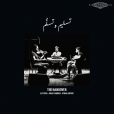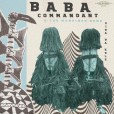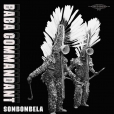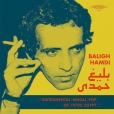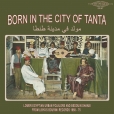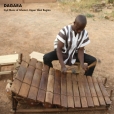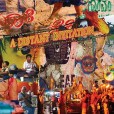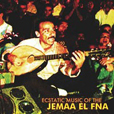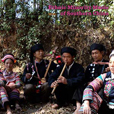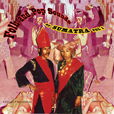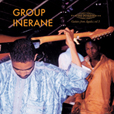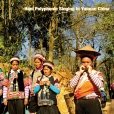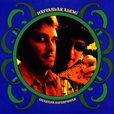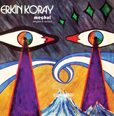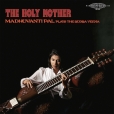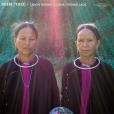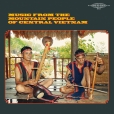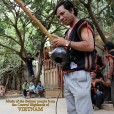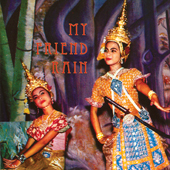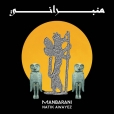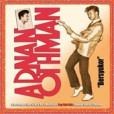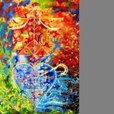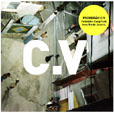Your basket is empty

West Virginia Snake Handler Revival
They Shall Take Up Serpents
Sublime Frequencies
Electrifying extracts from a Sunday service in the last snake-handling church in the Appalachians: the trance-like rhythms of a demented kind of rockabilly punk, with duelling guitars, concussive trap drums, and possessed, howling vocals.
“I’d sworn to stay far away from the snakes at the service,” recalls the recording engineer, “but instead they were waved in my face as they coiled in the preachers’ hands, and I crouched down at the foot of the altar tending to the equipment. The pastor soon was bitten and blood splattered, pooling on the floor. The female parishioners hurriedly came to wipe up the mess, and it instantly became clear just what the rolls of paper towels stacked on the pulpit had been for. You can actually hear this moment transpire towards the end of the track ‘Don’t Worry It’s Just a Snakebite (What Has Happened to This Generation?)’. The congregation leapt to its feet and a mini mosh-pit formed. The tag-team preachers huffed handkerchiefs soaked in strychnine, as they circled like aggro frontmen and an elderly worshipper held the flame of a candle to her throat, closing her eyes and swaying. The church PA blew out from the screams as a bonnet-wearing senior whacked away at a trap kit that dwarfed her. It was the most metal thing I’d ever seen, rendering Slayer mere kids play.”
‘Elegantly combines the delicacy of classical Arabic music, the raw expressiveness of Egypt’s countryside music, and the spontaneity of free improvisation, carefully obliterating the artificial separation between acoustic and electronic instruments. Despite the remarkable absence of any percussion or drums, The Handover is an extremely groovy band, with an ability to slow down and accelerate the tempo in almost telepathic synchronization at exactly the right moments.
‘Alongside the tight ensemble playing there is plenty of room for individual expression as the oud, synthesizer and violin take turns playing solos on top of repetitive riffs. Native Alexandrian Ayman Asfour plays violin with breathtaking beauty, not afraid to make it buzz, squeak and rattle. Belgian/Norwegian keyboardist Jonas Cambien makes the synthesizer a melodic instrument in its own right, at times evoking almost classical Maqam, at other moments coming straight out of an Egyptian wedding. The oud forms the backbone, as Aly Eissa’s solos guide the listener from minimalist, meditative drones, to a compelling climax, and back to earth.
‘There is much more to The Handover’s sound than the obvious references to Arabic and Egyptian music. The opening drone section of the album is pushed towards abstraction and even noise, and the vintage Farfisa organ gives the music a touch of 70s psychedelic rock. The repetitive riffs can be reminiscent of Embryo’s experiments combining krautrock with influences from the middle-east, but the use of repetition to induce trance dates way back in Egyptian music, and is present in many rituals like Sufi and moulid celebrations. The composed melodies on this album couldn’t be possible without Eissa’s deep love for this music. And what The Handover does with this composed material couldn’t be possible without three strong individual voices, their love to play music together and their dedication to push the traditions forward.’
‘After the afro-beat fury of Juguya, this second album combines a potent mix of traditional roots and modern Burkinabe funk with a reverent revival of the iconic Mandingue guitar music of the 1970s.’
Searing Sahelian dance music, recorded in Ouagadougou, Burkina Faso, in February 2018.
‘One of the most important Arabic composers of the twentieth century — writing for legends Umm Kalthum, Abdel Halim Hafez, Sabah, Warda, and many others — leading his own Diamond Orchestra, with Omar Khorshid on guitar, Magdi al-Husseini on organ, Samir Sourour on saxophone, and Faruq Salama on accordion. During this decade, Hamdi fully realized an international, hybrid music which incorporated beat-driven Eastern-tinged jazz, theremin-draped orchestral noir, Khorshid’s searing guitar solos, and a buzzing, sitar-based, Indo-Arabic psychedelic exotica… some of the hippest music of the era, anywhere.’
‘Egypt’s ‘official’ popular music throughout much of the twentieth century was a complex form of art song steeped in tradition, well-loved by the middle and upper classes. The music business was highly structured and professional; centred in Cairo. However, far from the metropolis, to the north and northwest, in towns like Tanta and Alexandria and extending across the Saharan Desert to the Libyan border, a raw, hybrid shaabi/al-musiqa al-shabiya style of music was springing up, supported by small, upstart labels.
‘This compilation covers the full range of styles presented by the short-lived but fecund Bourini Records, launched in the late 1960s in Benghazi, Libya. Gobsmacking moments include Basis Rahouma’s transformation into a growling, barking man-lion, and Reem Kamal’s onwards-and-upwards hand-clapping party banger, with a grooving nihilistic dissonance reminiscent of the Velvet Underground. The thorough-going contrast with mainstream Egyptian popular music is stark in Ana Mish Hafwatak, its vocal woven deftly through a constant accordion drone, and the sparse, slow-burning lament Al Bint al Libya. Whereas the mainstream was aspirational, projecting Egyptian culture at its most refined, the performances captured by Bourini were authentic expressions of ordinary, everyday life. More than half a century old, this music has lost none of its urgency, presence, or relevance.’
Shot between 2007 and 2012, Hisham Mayet’s film is an exhilarating, hallucinatory, harrowing record of music, ritual, life, and landscape along the Niger River, as it winds through Mali and the Republic of Niger.
Fantastic. Raw, blazing street music from Marrakesh. Electrified banjos and mandolins, drums, singing; amps run off moped batteries; the definitive interpretation of the Dana International hit Sabra And Shatilla.
Infectious songs and rootical instrumentals — the fifth SF album presenting Laurent ‘Kink Gong’ Jeanneau’s amazing documentation of the vanishing indigenous music of the rural Asian frontiers.
Limited, gatefold LP version of the first SF CD release in 2003: droning beat pop, early Orkes Melayu songs, Batak Tapanuli, traditional Minang, and rare folk drama from the Indonesian island, from cassettes.
‘Saharan trance stun guitar… a hypnotic choogle that rivals both the Magic Band’s early 70s marathon workouts and the Velvet Underground’s drone on tracks like Sister Ray.’
‘As with many other ethnic groups of the area, a traditional singing pattern is used with each singer adapting words to context. Many of these songs express intimate, strong emotions that bring tears to the performers while they are singing. The cascading mournful feel of this music is beautifully transcendent. You’ve never heard anything like it.
‘Instruments used by the ensemble include the babi (single tree leaf ) and mepa (tree leaf rolled up into the shape of a horn or mirliton), a chiwo (three-stringed bowed instrument), a labi (six-holed bamboo flute), a lahe (three-stringed small lute) and a meba (vertical reed instrument).’
New recordings invoking the grand traditions of Turkish psych with passionate recastings of tripped-out surf, Cambodian rock, Saharan guitar, electric Thai; even a little Sun City Girls post-punk.
The oldest form of North Indian classical music still performed today — dhrupad — played by Madhuvanti on an instrument she built herself, recorded at home.
Two ragas; over ninety minutes.
Full-color gatefold, with extensive liner notes.
Rawly ethereal, other-worldly singing by members of hill tribes in China, Vietnam, and Laos.
‘Dreamy musical segments, fleeting glimpses, odd sounds, temple shrines, decay, death, afternoon rains, and mysterious celebrations… from the Irrawaddy delta to humid nights on the streets of Isan province.’
Charged, gritty, soulful pop yeh yeh from 1968-71, with backing by Malaysian legends like The Rhythm Boys, The Wanderers, The Flamingoes and The Falcons.
With a full-size, eight-page, colour booklet containing detailed biographical notes and Othman’s own rare photos.
‘Deben Bhattacharya (1921–2001) was a highly influential field recordist, poet, filmmaker, musicologist and amateur ethnomusicologist, based in Calcutta and Paris. He produced a vast number of LPs, CDs, videos and radio shows of traditional music from India, Asia, Africa, the Middle East, and Europe.
‘Never before published, Paris To Calcutta features over four hours of music and is Deben’s impressionistic account of a 1955 journey overland, in a converted milk delivery van, from France to India, collecting and exploring music along the Desert Road.
‘With four CDs of recordings, photographs, Deben’s original recording notes, musical transcriptions and more. An amazing glimpse into a time long gone and essential listening for anyone interested in folk and world music traditions.’
Vivid, unflinching film of two annual Haitian Vodou pilgrimages — for Ezili Danto, goddess of love, art and passion, and her old man Ogoun, god of war, iron, healing. Ecstatic, bloody, intensely musical.
Aka baile funk.

